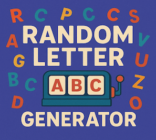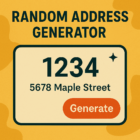Welcome to a treasure trove of 2nd grade writing prompts — a compact, easy-to-use collection of 100 engaging writing prompts created to spark imagination, build confidence, and strengthen core language skills. Whether you use short journal prompts, imaginative storytelling, or playful creative writing prompts, these ideas help kids express feelings and practice writing in fun, manageable ways. Pick one prompt today and try a quick 5-minute writing activity with your child or class to start a joyful habit.
2nd grade writing prompts are simple, powerful tools that build creativity, confidence, and core language skills in young learners. A short journal practice gives students a safe place to express feelings, while storytelling prompts stretch imagination and narrative ability. Use these prompts at home or in class to make writing feel fun and achievable.
Start tomorrow with a 5-minute prompt: have students write two sentences about “one thing that will make today great.” Try a daily mini-journal or a weekly storytelling game to boost vocabulary, sentence structure, and confidence.
What Are 2nd Grade Writing Prompts?
2nd grade writing prompts are short, age-appropriate ideas that jump-start a child’s imagination and make writing less intimidating. Prompts might ask students to write a quick journal entry about a feeling, do a sketch-and-write about a favorite animal, or create a short story that begins with “one day…”.
They come in many forms—personal reflections, narrative storytelling, or simple informative pieces—so students practice vocabulary, sentence structure, and organization while following a clear, friendly task. Example starter for a story prompt: “One day I woke up and ___.”
Benefits of Using Writing Prompts in 2nd Grade
Short, targeted writing prompts give 2nd graders clear, consistent practice that builds language skills, grows confidence, and keeps writing fun. Small, regular activities turn practice into progress and help students enjoy sharing ideas through words.
1) Improve grammar, spelling, and sentence structure
Regular practice helps students notice and apply correct grammar, spelling, and sentence structure. Teacher tip: pair a prompt with a 2–3 minute mini-lesson on one focus skill — for example, capitalization. Quick example mini-lesson: show three sentences with capitalization errors, ask students to fix them, then have students write a 3-sentence response to the prompt using correct capitalization.
2) Build daily writing discipline
Short, consistent prompts create a reliable routine that develops writing habits. Try a 5-minute morning journal where each student answers one prompt; over time this daily practice boosts fluency and confidence. Example prompt for daily practice: “Write two sentences about one thing you want to learn this week.”
3) Reduce writing anxiety through guided ideas
Guided prompts remove the blank-page fear by giving students a clear starting point. Use sentence starters or a drawing-first approach for reluctant writers: they draw a picture, then write 1–2 sentences about it. Small wins — like completing one clear sentence — build momentum and encourage risk-taking in writing.

Quick start: Try one 5-minute prompt this week and track a simple measure — number of students who share, one new word used, or a sentence added — to see quick gains in vocabulary and sentence confidence.
How to Use 2nd Grade Writing Prompts Effectively
Maximize the impact of 2nd grade writing prompts with simple, repeatable routines that make writing feel fun and achievable. Short, focused activities help students practice regularly without pressure and build confidence over time.
1) Morning journal activities
Try a 5-minute morning journal: give students one journal prompt and ask them to write 2–3 sentences. Example starter: “Write about one thing that will make today great.” Another quick prompt: “Describe your favorite animal and one reason you like it.” Swap a few responses aloud to build confidence.
2) Creative storytelling games
Play a “story chain” game to turn prompts into a collaborative story. One child begins with “One day…” and each student adds a sentence. Sample game prompt: “One day a tiny superhero lost their powers — what happens next?” This encourages quick thinking and shows how creative writing can grow from a tiny idea. Scaffold for struggling writers: give them the starter line and ask for one sentence only.
3) Homework or weekend reflection writing
Assign an easy prompt for home—ask students to write one short paragraph about a weekend trip or a favorite animal. Example take-home prompt: “Write about a trip to the park and one thing you discovered.” Keep expectations low (one paragraph or a drawing + caption) so families can support writing without stress.
4) Group writing sessions in the classroom
Use pairs or small groups to draft a short scene from a prompt, then share aloud. Provide a simple 2-step checklist: (1) plan two sentences, (2) write and read. Encourage peer feedback that is kind and specific (1 compliment, 1 question, 1 idea). Assessment tip: collect one sample from each group weekly to track vocabulary growth and sentence confidence.

2-week mini-plan: Week 1 — daily 5-minute journals using a different prompt each day; Week 2 — two storytelling games and one group writing project. Track enthusiasm with a simple chart (who shared, one new word used) to see quick wins in fluency and creative writing.
100 Fun 2nd Grade Writing Prompts
Engaging young writers means offering a mix of quick prompts they can try alone or with friends. Pick 1–2 prompts per week: have students draw, write 1–3 sentences, then expand a few into full stories or a short journal entry. Below are 100 kid-friendly prompts divided into four easy-to-use categories — use them for morning routines, creative writing time, or weekend reflection.
1) 20 Personal and Feelings Prompts
- What makes you happy on a rainy day? (Journal prompt — write 2 sentences)
- Describe a time you felt brave.
- What is your favorite family tradition and why?
- Write about a friend who always makes you laugh.
- How do you feel when you try something new?
- What is your happiest memory? Describe it.
- Share a time when you helped someone.
- What is your dream for the future?
- Write a letter to your future self.
- How do you feel about your favorite hobby?
- What would you do if you could change one thing in the world?
- Describe something that makes you feel loved.
- What is your favorite color? How does it make you feel?
- What is something you are really good at? How does it feel to do it?
- Write about a time you felt really proud of yourself.
- What makes you feel worried? How do you handle it?
- Describe a time you were surprised by something.
- What is your favorite holiday and how does it make you feel?
- Write about a time you felt scared and what you did.
- How do you feel when someone says something nice to you?
- If you could make one wish, what would it be and why?
Scaffold idea: For struggling writers, give this starter: “My favorite holiday is ___ because ___.”
2) 20 Nature and Adventure Prompts
- Imagine you found a hidden treehouse. What’s inside?
- What would you do if you could talk to animals?
- Describe your adventure in the mountains.
- What do you think the ocean is hiding?
- Write about a magical garden you discovered.
- If you were a bird, where would you fly and why?
- What adventures can you have on a rainy day?
- Describe a time you went on a picnic. What did you see?
- Your adventure begins in a dark cave. What happens next?
- What’s your favorite animal and why?
- Write about exploring a forest. What do you find?
- If you could climb any mountain, which one would it be?
- Imagine you discovered a new planet. Describe it.
- What do you think is at the bottom of a river?
- Describe your perfect day spent in nature.
- If you could dive into the ocean, what would you like to see?
- What would it be like to live in a tree?
- What’s your favorite season and what adventures does it bring?
- Write about a journey to a volcano.
- If you could create a new forest creature, what would it look like?
- What adventures could you have on a bike ride?
Scaffold idea: Try the sentence starter: “If I could talk to animals, I would ___.”
3) 20 Creative Storytelling Prompts
- Write a story about a day when the sun didn’t rise.
- Imagine you are a superhero. What is your power?
- Tell a story about a talking tree.
- If you had a magic wand, what would you wish for?
- Write about a friendly monster that lives in your closet.
- A mysterious box appears on your doorstep. What’s inside?
- What if you woke up one morning with wings?
- Tell a story about your favorite toy coming to life.
- Imagine you could time travel. Where would you go?
- Write a story that begins with “It was a dark and stormy night…”
- What if animals ruled the world? Describe your day.
- Write about a treasure hunt that goes wrong.
- Imagine if you were a pirate for a day. What would you do?
- Write about a magical door in your home that leads to places unknown.
- Describe a day spent with your favorite character from a book.
- Tell a story about finding a dragon egg.
- What happens in a land where everyone is happy all the time?
- Write about a robot that wants to be human.
- Imagine you are the last person on Earth. What do you do?
- Tell a story about a dream that comes true.
- What if all the toys in your room came to life when you slept?
Scaffold idea: For “One day…” prompts give this starting line: “One day I woke up and ___.”
4) 20 Holiday and Seasonal Prompts
- What is your favorite holiday and why do you love it?
- Describe a fun Halloween adventure.
- What would you do to celebrate your birthday this year?
- Write about a magical winter wonderland.
- How do you celebrate Thanksgiving with your family?
- Describe your ideal summer day.
- What is your favorite winter activity?
- Write a story about a character who finds a special gift on Christmas.
- How do you want to celebrate New Year’s Eve?
- Imagine a holiday that does not yet exist. What would it be?
- Describe the best present you ever received.
- What traditions do you have for springtime?
- Write about a special Fourth of July celebration.
- If you could create a new holiday, what would it be called?
- How does your family decorate for the holidays?
- What does a perfect picnic look like during the summer?
- Write about a time when you felt the holiday spirit.
- How do you celebrate a special occasion with friends?
- What are your favorite foods during the holiday season?
- Describe a memorable moment from a family gathering.
- Imagine a holiday adventure with your best friend.
Scaffold idea: Use “I remember when…” to help students write about family traditions.
5) 20 Imaginative “What If” Prompts
- What if my pet could talk? Describe your first conversation.
- What if you could fly for one day? Where would you go?
- What if your shadow came to life? What would it do?
- What if you woke up as your favorite book character? What would you do?
- What if your toys could travel to another world? Describe that world.
- What if you had the power to make one rule for the whole school? What rule would you make?
- What if you could swap places with an animal for a day? Which animal and why?
- What if you found a door that led to yesterday? What would you change?
- What if it rained candy? What would you do first?
- What if you had a robot helper at home? Describe your day together.
- What if your bicycle could talk? What stories would it tell?
- What if you could shrink to the size of an ant? Where would you explore?
- What if you discovered a secret map? Where does it lead?
- What if your backpack could pack itself? How would that help you?
- What if you had an invisible friend for one week? What would happen?
- What if you found a pair of magic glasses? What would you see?
- What if you could plant a tree that grows candy? What would you do with it?
- What if your pet could wear clothes? Design an outfit and describe it.
- What if you could talk to plants? What would they say?
- What if every book you opened came to life? Which book would you choose first?
Purpose: Prompts to develop creative thinking (“What if my pet could talk?”). Scaffold idea: For reluctant writers, try this starter: “If my pet could talk, the first thing it would say is ___.”

Printable idea: Turn these prompts into cards for a prompt jar — pull one each day for a quick creative writing or journal activity.
Maximizing Collaboration Through AI Content Insights
Effective collaboration among writers, designers, and educators improves the quality and reach of curriculum and writing prompts. Modern AI insights help teams turn scattered assets into shared knowledge, making it easier to plan lessons, reuse strong prompts (for example, the “100 Fun 2nd Grade Writing Prompts” list), and measure which ideas resonate with students and teachers.
What Is AI Content Grouping and Why It Matters
AI content grouping automatically clusters related assets using NLP and semantic analysis. It goes beyond manual tags and folders by revealing topic relationships, tone similarities, and intent-based groups, so teams quickly find lesson plans, prompt drafts, and images that belong together.
How AI Grouping Transforms Team Workflows
- Centralized knowledge hubs from scattered files — Example: lesson plans, prompt cards, and classroom images from multiple drives are grouped so teachers can reuse a set of morning journal prompts without rebuilding materials.
- Reduced duplication of content across departments — Example: curriculum and marketing teams spot existing holiday prompts and avoid recreating the same assets for different grade levels.
- Smarter task assignments based on grouped insights — Example: editors or curriculum writers receive prompts that match their style strengths because the AI identifies clusters by tone and intent.
In short, AI-driven organization replaces repetitive sorting with creative planning and clearer team priorities — freeing time to focus on improving lessons and student outcomes.
Key Features to Look for in AI Content Grouping Tools
- Automatic taxonomy generation — builds topic hierarchies without manual tagging.
- Cross-project linking — connects assets across campaigns, courses, or grade levels (helpful when adapting 2nd grade writing prompts for other grades).
- Collaborative tagging and editing — lets teams refine clusters together and add classroom context.
- Integration with CMS or learning platforms — ensures grouped insights flow into publishing and analytics systems.
When evaluating tools, prioritize accuracy, scalability, and integration depth so the system grows with your content needs and works with school or district systems.
How to Implement AI Content Grouping in Your Workflow
Concise roadmap:
- Audit your existing content ecosystem to map sources and formats (include prompt lists, lesson plans, and student-facing assets).
- Upload or sync data from CMS/cloud storage so the AI can access assets.
- Run an initial AI grouping pass and review clusters with stakeholders — use the “100 Fun 2nd Grade Writing Prompts” as a pilot dataset.
- Customize categories and define collaboration rules (who edits clusters, naming conventions, grade-level tags).
- Train teams to interpret and update clusters regularly so results stay relevant and aligned with classroom goals.
Common Pitfalls and How to Avoid Them
- Treating AI clusters as “final” — remedy: require human review and monthly cluster checks to keep context accurate.
- Ignoring context or instructional intent behind grouped topics — remedy: add human labels, example lesson uses, and grade-level notes to guide interpretation.
- Failing to align AI outputs with school goals — remedy: set measurable objectives and map clusters to curriculum KPIs (engagement, reuse rate, or time saved).
Use hybrid human–AI workflows and refresh training data periodically to keep grouping accurate and useful. Want to test it quickly? Try a free grouping tool on a small dataset (for example, one category of prompts) to measure collaboration gains before scaling up.

Tips for Encouraging Kids to Write More
Encouraging writing early helps students build communication skills and a love for words. Use small, fun routines that fit into the school day or at home to make writing feel easy and rewarding for kids and students.
1) Use colorful notebooks or stickers
Make writing materials inviting: let each child choose a colorful notebook or add stickers for milestones. How-to: give a sticker after every three journal entries; trade five stickers for a short story choice. Example badge ideas: “Brave Writer” (5 prompts), “Sentence Star” (10 prompts). Quick prompt: “Draw one thing you see on your way to school and write two sentences about it.”
2) Let kids share stories aloud
Oral sharing builds confidence and listening skills. Try a weekly “Share & Shine” on Fridays where 2–3 students read a short entry or poem aloud. Short script for teachers: “Today [name] will share—let’s listen for one thing we liked.” Sample prompt for sharing: “Read a short poem you wrote about your pet.” Keep sharing short (30–60 seconds) and positive.
3) Reward consistency with fun badges or stars
Use a simple reward system to reinforce regular practice. Example: a progress chart where students earn a badge for completing five prompts. Focus on effort (tried new words, used punctuation) rather than perfect grammar to keep motivation high. Printable idea: a simple sticker chart teachers or parents can photocopy and use.
4) Encourage peer reading and feedback
Teach a quick feedback rubric: 1 compliment, 1 question, 1 idea. In pairs, students read each other’s short journal entry or creative writing piece and follow the rubric. This builds kindness, editing skills, and confidence.
Try this routine: pick one prompt from the “100 Fun 2nd Grade Writing Prompts” list each week—use it for a 5-minute journal, a short story, or a partner read-aloud. Rotate activities (journal, poem, story) so kids practice different skills and stay engaged. If you’d like, offer a small micro-CTA for teachers: “Download a free sticker chart to start” (link to resource can be added by the editor).
Common Mistakes to Avoid When Using Writing Prompts
Knowing common pitfalls helps teachers and parents turn prompts into clear learning opportunities. Below are frequent mistakes plus quick, positive fixes you can apply immediately with 2nd grade students to protect creativity and build skill.
1) Giving too many prompts at once
Problem: Overloading students with choices can confuse and overwhelm them.
Quick fix: Offer one clear prompt and one optional extension. For example: main task — write 2 sentences; extension — draw a picture or add one more sentence if you want. Teacher handout idea: a one-page choice card listing the main prompt and one extension to photocopy for students.
2) Correcting grammar too early
Problem: Immediate correction can shut down creativity and risk-taking.
Quick fix: Use a two-step process — focus on content first (celebrate ideas), then do a short revision mini-lesson later to address one grammar or spelling goal for the class. Classroom anecdote: a teacher praised a student’s wild idea first, then later used the class example to teach commas — students stayed excited to write.
3) Ignoring creative expression in favor of structure
Problem: Prioritizing rigid structure too soon can erase a child’s voice.
Quick fix: Let students free-write or draw for the first draft, then introduce a simple structure checklist for revision so voice and clarity grow together. Simple structure checklist example:
- Beginning — Who and where?
- Middle — What happened next?
- End — How did it finish or how did you feel?
4) Skipping follow-up discussions
Problem: Missing feedback and reflection loses a chance for learning and confidence-building.
Quick fix: Add a 3-minute “talk-back” after writing — each student shares one thing they liked about their work and one word they’d like to improve. Keep feedback kind and specific (model the rubric: 1 compliment, 1 question, 1 idea).
Optional for teams using AI tools: avoid treating AI clusters as final — schedule monthly reviews, use human+AI workflows for context, and refresh training data so automated groupings stay aligned with classroom goals.
Conclusion
2nd grade writing prompts are more than warm-up exercises — they help kids and students build language, creativity, and confidence while making writing a joyful habit. Use short, varied prompts so learners can experiment with voice, learn new words, and enjoy storytelling at school and at home.
Try one free prompt this week and track engagement with a simple checklist: How many students shared? How many added details? Which prompt sparked the most imagination? A one-line tracking table (Student | Shared? | Added Detail? | Notes) works well for quick classroom measurement.
For teams and content managers: If you manage prompt libraries, test a free AI content grouping tool on a small set of prompts to see whether it helps you reuse lesson assets and reduce duplication. Pilot first, measure time saved, then decide whether to scale.
FAQ
What are 2nd grade writing prompts?
2nd grade writing prompts are short, age-appropriate ideas that inspire students and kids to write—ranging from quick journal entries to short stories. They help children practice vocabulary, sentence structure, and creative expression in manageable steps.
How can writing prompts benefit my child?
Prompts build confidence, improve basic writing mechanics (grammar and spelling), and encourage creative thinking. Short, regular practice helps 2nd graders become more comfortable writing and improves their ability to write story or short informational pieces.
What are some effective strategies for using writing prompts?
Use a mix of morning journal activities, creative storytelling games, brief homework prompts, and group writing sessions. Keep tasks short (5 minutes for journals) and offer sentence starters or drawing-first options for reluctant writers so writing stays fun at school and home.
How can I encourage my child to write more?
Make writing enjoyable—use colorful notebooks, let kids share stories aloud, reward consistency with badges or stars, and encourage peer reading with kind, specific feedback. Rotate prompts (journal, poem, story) so writing practice stays fresh and rewarding.
What mistakes should I avoid when using writing prompts?
Avoid giving too many prompts at once, correcting grammar too early, prioritizing rigid structure over voice, and skipping follow-up discussions. Instead, use one clear prompt, celebrate ideas first, then add brief revision or talk-back time to strengthen skills.











